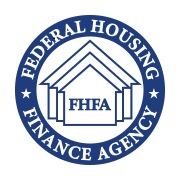New Housing Goals and Tenant Protections: A Shift in the GSE Landscape
August 29, 2024, 11:14 pm

Location: United States, District of Columbia, Washington
Employees: 5001-10000
Founded date: 1938

Location: United States, District of Columbia, Washington
Employees: 501-1000
Founded date: 2008
Freddie Mac
Location: United States, Virginia, McLean
Employees: 5001-10000
Founded date: 1970
Total raised: $2.64B
The Federal Housing Finance Agency (FHFA) is reshaping the housing landscape. With new proposals for Fannie Mae and Freddie Mac, the agency aims to address the pressing need for affordable housing. The recent announcements signal a shift towards more equitable access for low- and moderate-income families.
The FHFA's proposed housing goals for 2025 to 2027 set the stage for a new era. The focus is clear: ensure that government-sponsored enterprises (GSEs) purchase mortgages that promote equitable access to affordable housing. This is not just a policy change; it’s a lifeline for underserved communities.
On the single-family side, the FHFA has proposed that 25% of purchase mortgages go to borrowers earning less than 80% of the area median income (AMI). This is a slight reduction from the current requirement of 28%. Additionally, the goal for very low-income purchases—those earning less than 50% AMI—drops from 7% to 6%. The unchanged refinance goal remains at 26%, while the purchase sub-goal for low-income census tracts stays at 4%.
However, there’s a silver lining. The minority census tracts home purchase goal is set to rise from 10% to 12%. This shift reflects a growing recognition of the need for diversity in homeownership. The GSEs must now meet these benchmarks or align with actual market levels determined retrospectively.
The new compliance evaluation process is a game changer. Previously, if the GSEs failed to meet a goal, they had to submit a plan for improvement. Now, if they meet newly defined enforcement factors, they can bypass this requirement. This change acknowledges the unpredictability of the housing market and allows for more flexibility in meeting goals.
On the multifamily housing front, the GSEs are also stepping up. They must purchase mortgages on multifamily properties that meet specific affordability targets. This includes a subgoal for low-income families in smaller multifamily properties. The FHFA emphasizes that these goals are crucial in addressing persistent challenges in the housing market.
The FHFA Director highlights the importance of these goals. They are not just numbers; they represent a commitment to support key affordable housing segments. The proposed benchmarks reflect current economic realities and aim to keep the GSEs focused on their mission.
But the GSEs are not stopping there. In a separate announcement, they unveiled new tenant protection plans for multifamily properties. These standards will require a five-day grace period for rent payments, a 30-day notice for rent increases, and a 30-day notice of lease expiration. This policy will take effect for new loans starting in February 2025.
These lease standards are a significant step forward. They aim to create a more transparent relationship between housing providers and tenants. The GSEs recognize the need for consistent expectations regarding tenant notification and grace period practices. This move aligns with their mission to expand access to affordable and sustainable housing.
The new tenant protections are not just about compliance; they are about improving communication. The GSEs are committed to ongoing engagement with stakeholders, including tenants and housing providers. This collaborative approach is essential for successful implementation.
The announcement of these standards marks a milestone in tenant protections. While many borrowers already exceed these minimum standards, all will now be required to meet them to obtain GSE financing. This ensures a baseline level of protection for tenants across the board.
The GSEs have also provided supplemental materials to clarify the new standards. These include FAQs and a policy grid outlining factors such as applicability, updates to loan documents, and monitoring details. This transparency is crucial for lenders, borrowers, and market participants.
The changes proposed by the FHFA and the GSEs reflect a broader understanding of the housing market's complexities. They recognize that affordable housing is not just a goal; it’s a necessity. The new housing goals and tenant protections are steps toward a more equitable future.
As the deadline for comments on the proposed rule approaches, stakeholders have the opportunity to weigh in. This engagement is vital for refining the goals and ensuring they meet the needs of the communities they aim to serve.
In conclusion, the FHFA's new housing goals and tenant protection plans signal a pivotal moment in the housing market. They reflect a commitment to equitable access and a recognition of the challenges faced by low- and moderate-income families. The GSEs are poised to play a crucial role in this transformation. As they navigate these changes, the focus remains on creating a housing landscape that is accessible, affordable, and sustainable for all. The road ahead may be challenging, but the destination is worth the journey.
The FHFA's proposed housing goals for 2025 to 2027 set the stage for a new era. The focus is clear: ensure that government-sponsored enterprises (GSEs) purchase mortgages that promote equitable access to affordable housing. This is not just a policy change; it’s a lifeline for underserved communities.
On the single-family side, the FHFA has proposed that 25% of purchase mortgages go to borrowers earning less than 80% of the area median income (AMI). This is a slight reduction from the current requirement of 28%. Additionally, the goal for very low-income purchases—those earning less than 50% AMI—drops from 7% to 6%. The unchanged refinance goal remains at 26%, while the purchase sub-goal for low-income census tracts stays at 4%.
However, there’s a silver lining. The minority census tracts home purchase goal is set to rise from 10% to 12%. This shift reflects a growing recognition of the need for diversity in homeownership. The GSEs must now meet these benchmarks or align with actual market levels determined retrospectively.
The new compliance evaluation process is a game changer. Previously, if the GSEs failed to meet a goal, they had to submit a plan for improvement. Now, if they meet newly defined enforcement factors, they can bypass this requirement. This change acknowledges the unpredictability of the housing market and allows for more flexibility in meeting goals.
On the multifamily housing front, the GSEs are also stepping up. They must purchase mortgages on multifamily properties that meet specific affordability targets. This includes a subgoal for low-income families in smaller multifamily properties. The FHFA emphasizes that these goals are crucial in addressing persistent challenges in the housing market.
The FHFA Director highlights the importance of these goals. They are not just numbers; they represent a commitment to support key affordable housing segments. The proposed benchmarks reflect current economic realities and aim to keep the GSEs focused on their mission.
But the GSEs are not stopping there. In a separate announcement, they unveiled new tenant protection plans for multifamily properties. These standards will require a five-day grace period for rent payments, a 30-day notice for rent increases, and a 30-day notice of lease expiration. This policy will take effect for new loans starting in February 2025.
These lease standards are a significant step forward. They aim to create a more transparent relationship between housing providers and tenants. The GSEs recognize the need for consistent expectations regarding tenant notification and grace period practices. This move aligns with their mission to expand access to affordable and sustainable housing.
The new tenant protections are not just about compliance; they are about improving communication. The GSEs are committed to ongoing engagement with stakeholders, including tenants and housing providers. This collaborative approach is essential for successful implementation.
The announcement of these standards marks a milestone in tenant protections. While many borrowers already exceed these minimum standards, all will now be required to meet them to obtain GSE financing. This ensures a baseline level of protection for tenants across the board.
The GSEs have also provided supplemental materials to clarify the new standards. These include FAQs and a policy grid outlining factors such as applicability, updates to loan documents, and monitoring details. This transparency is crucial for lenders, borrowers, and market participants.
The changes proposed by the FHFA and the GSEs reflect a broader understanding of the housing market's complexities. They recognize that affordable housing is not just a goal; it’s a necessity. The new housing goals and tenant protections are steps toward a more equitable future.
As the deadline for comments on the proposed rule approaches, stakeholders have the opportunity to weigh in. This engagement is vital for refining the goals and ensuring they meet the needs of the communities they aim to serve.
In conclusion, the FHFA's new housing goals and tenant protection plans signal a pivotal moment in the housing market. They reflect a commitment to equitable access and a recognition of the challenges faced by low- and moderate-income families. The GSEs are poised to play a crucial role in this transformation. As they navigate these changes, the focus remains on creating a housing landscape that is accessible, affordable, and sustainable for all. The road ahead may be challenging, but the destination is worth the journey.